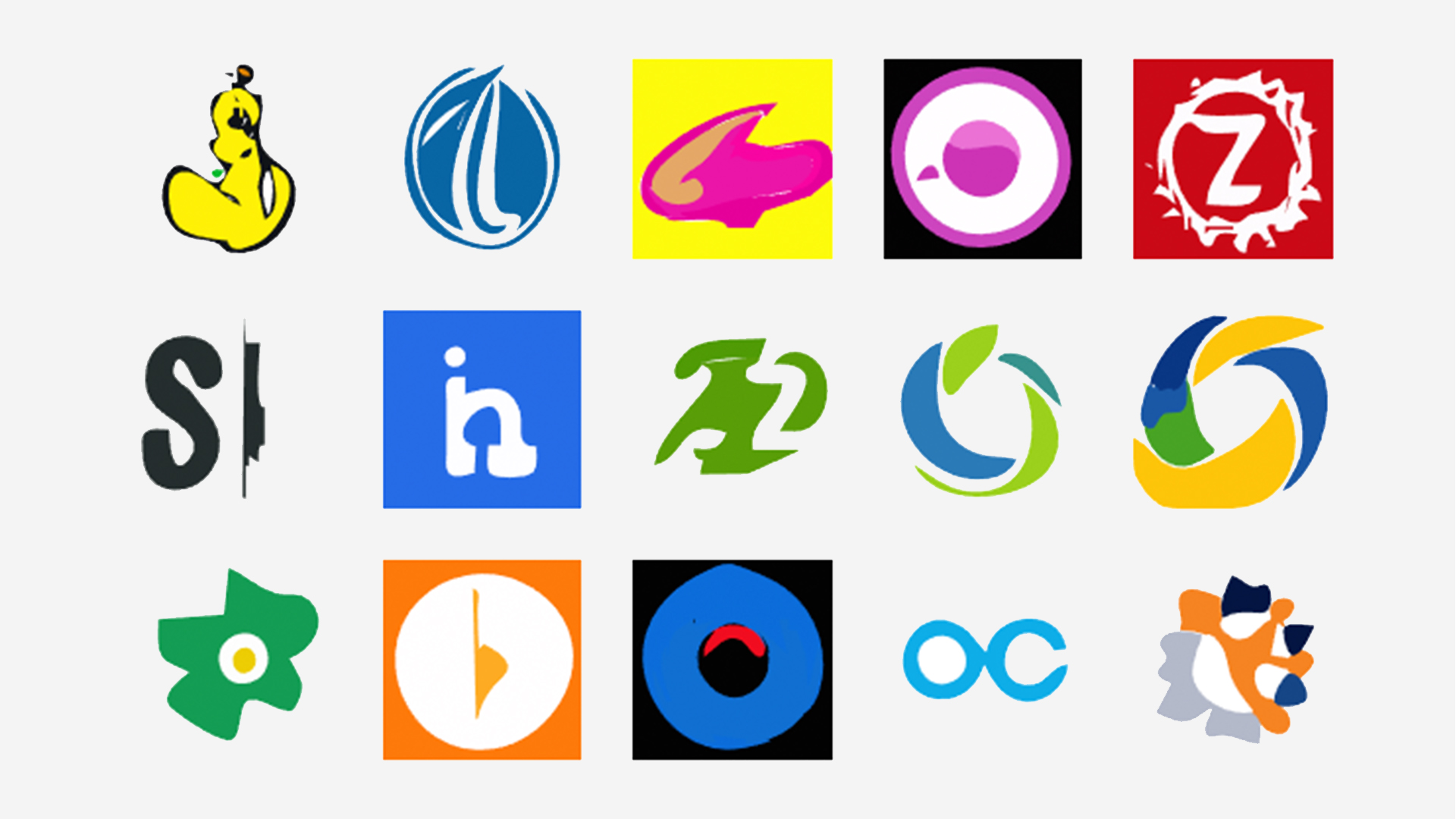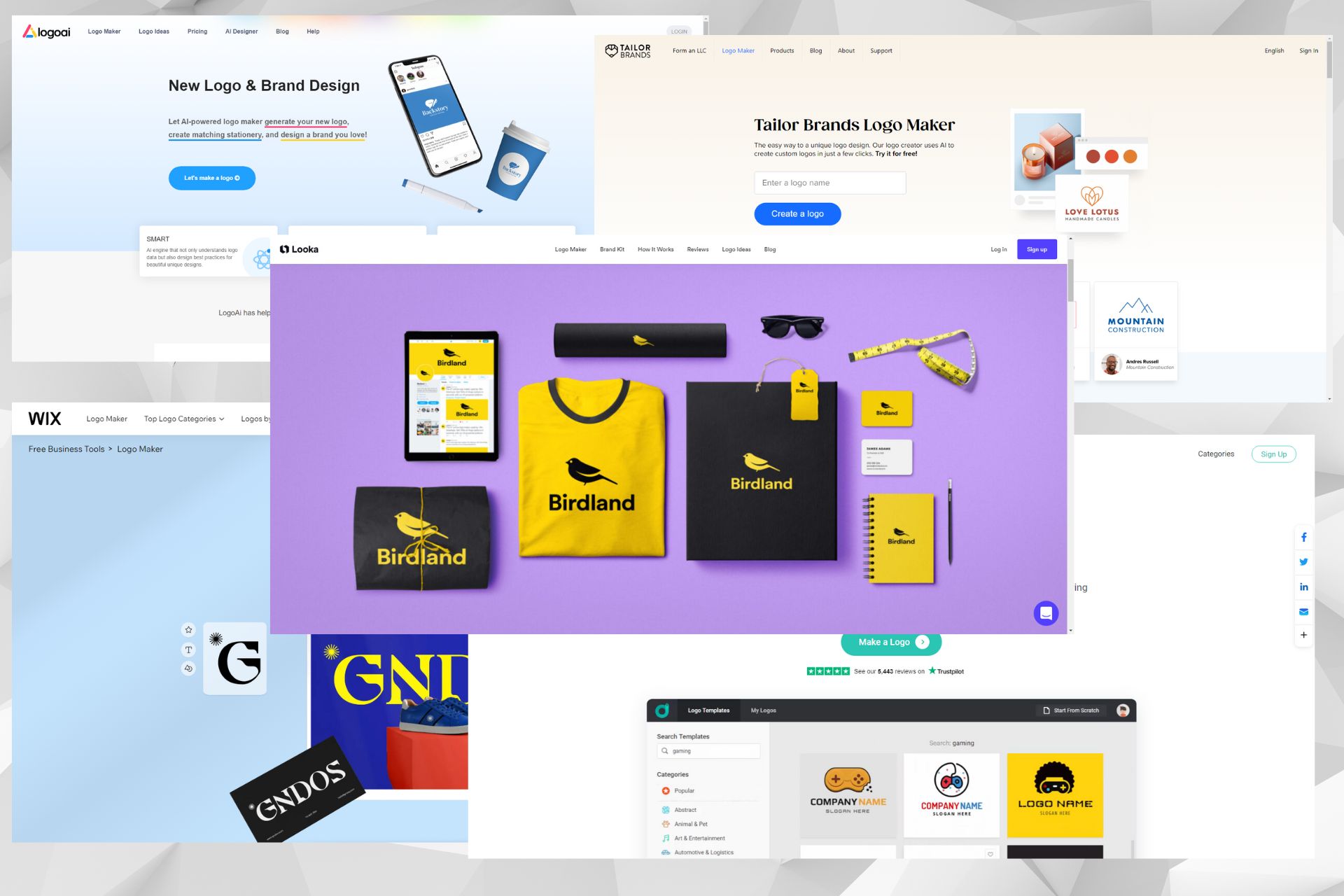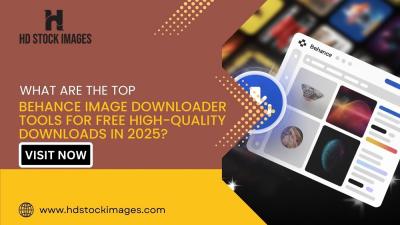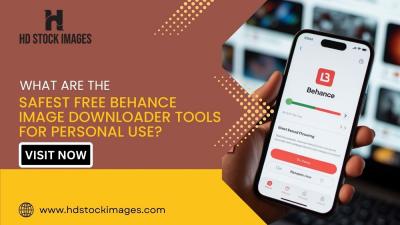The journey of logo design has been a fascinating one, marked by significant advancements from manual craftsmanship to the sophisticated use of artificial intelligence. This evolution reflects not just a change in tools and techniques, but also a broader shift in our understanding of brand identity and user engagement.
Early Days of Logo Design: Initially, logo design was predominantly a manual process, heavily reliant on the designer's artistic skills and creativity. Graphic designers used tools like pencils, ink, paper, and later, design boards to conceptualize and create logos. This era focused extensively on bespoke, handcrafted logos that were unique to each brand.
The Digital Revolution: The introduction of computers and graphic design software like Adobe Illustrator and Photoshop transformed the logo design landscape. Designers were now able to create more complex and polished logos with greater ease and precision. Digital tools also introduced the ability to easily modify and adapt designs, making the process more flexible and iterative.
- Increased Precision: Digital tools allowed for more accurate and detailed designs.
- Efficiency: Faster design process with easier revisions and adaptations.
- Variety: Broader range of styles and effects became possible.
AI-Powered Logo Design: The latest significant evolution is the adoption of AI in logo design. AI-powered logo generators use machine learning algorithms to create logos that are not only visually appealing but also tailored to specific brand identities.
| Feature | Description |
|---|
| Data-Driven Design | AI algorithms analyze vast amounts of design data to suggest styles and patterns that are trending and effective. |
| Personalization | AI tools adapt to the user's preferences and brand requirements, offering customized logo suggestions. |
| Speed and Efficiency | Logos can be generated in minutes, significantly speeding up the design process. |
As we embrace AI in logo design, it's crucial to acknowledge that these tools don't replace human creativity but rather enhance it. Designers can leverage
AI to generate ideas and base designs, which can then be refined and personalized with their creative touch. This synergy of AI and human creativity is setting a new benchmark in the field of logo design, offering unprecedented opportunities for businesses to create impactful and memorable brand identities.
 AI logo
AI logo generators represent a significant leap in graphic design technology, combining the power of artificial intelligence with creative design. Understanding the basics of how these generators work is essential for anyone looking to leverage this technology for their branding needs.
Algorithmic Learning: At the core of
AI logo generators are machine learning algorithms. These algorithms are trained on large datasets of logo designs, learning from patterns, styles, and trends in the world of graphic design. This training enables the AI to generate logos that are not only visually appealing but also align with current design standards.
- Data Analysis: The AI analyzes existing logos and design concepts, understanding different elements like color schemes, typography, and graphical styles.
- Pattern Recognition: By recognizing patterns in design elements, the AI can predict what combinations might work well for a new logo.
User Input and Customization: An integral part of the process is the user's input. Users typically provide basic information about their company, such as:
| Input Type | Description |
|---|
| Business Name | The name of the company or brand. |
| Industry | The sector or domain the business operates in. |
| Color Preferences | Preferred color palette for the logo. |
| Style Preferences | Desired style (e.g., modern, vintage, minimalist). |
The AI uses this information to tailor the design process, ensuring that the generated logos resonate with the brand's identity and industry standards.
Design Generation and Iteration: Once the AI has processed the user input, it generates several logo designs. Users can then review these options, selecting one that best fits their vision. They can also request modifications and iterations, a process during which the AI learns from the feedback to refine the designs further.In conclusion,
AI logo generators are a blend of sophisticated machine learning techniques and user-guided customization. This synergy enables the creation of unique, relevant, and aesthetically pleasing logos, tailored to the specific needs of each brand. By understanding these basics, businesses can more effectively utilize
AI logo generators to enhance their brand identity.
The Benefits of Using an AI Logo Generator for Your Business
Integrating
AI logo generators into the branding process brings a host of advantages to businesses, especially in an era where efficiency, customization, and innovation are key. Below, we explore the various benefits of using AI for logo creation.
1. Time and Cost Efficiency- Quick Turnaround: AI logo generators can produce designs in a matter of minutes, significantly reducing the time traditionally required for logo development.
- Reduced Costs: By automating the design process, these tools eliminate the need for expensive design services, making them a cost-effective solution for businesses, particularly small and medium-sized enterprises.
2. Variety and Creativity- Diverse Options: AI algorithms can generate a wide range of design options, offering businesses a variety of choices that they might not have considered with traditional design methods.
- Creative Inspirations: With its vast database of design elements, an AI logo generator can provide unique and creative logo designs, pushing the boundaries of conventional logo design.
3. Customization and Relevance- Tailored to Your Brand: AI logo generators take into account specific business details and preferences, ensuring that the final design aligns with the brand's identity and values.
- Industry-Relevant Designs: The AI's understanding of different industry trends allows for the creation of logos that are not only aesthetically pleasing but also relevant and appropriate for the business's market sector.
4. Accessibility and User-Friendly Interface- No Design Skills Required: These tools are designed to be user-friendly, making logo design accessible even to those without any graphic design experience.
- Global Accessibility: Being online tools, AI logo generators are accessible from anywhere, providing global businesses with easy access to logo design.
5. Continuous Learning and Improvement- Up-to-Date with Trends: AI systems continuously learn from new designs and trends, ensuring that the logos generated are modern and fresh.
- Feedback-Driven Refinement: The more feedback these systems receive, the more refined and accurate the logo outputs become over time.
In conclusion, the benefits of using an AI logo generator for your business are manifold, encompassing everything from cost savings and time efficiency to creative flexibility and customization. This innovative approach to logo design is not only practical but also aligns with the fast-paced, dynamic nature of today's business environment.
Step-by-Step Guide to Creating Your Logo with an AI Generator
Creating a logo using an AI generator is a straightforward and intuitive process. This guide will walk you through the steps to design a logo that not only looks professional but also encapsulates your brand's essence.
1. Choose the Right AI Logo Generator- Research and select an AI logo generator that suits your needs, considering factors like customization options, ease of use, and pricing.
2. Input Your Business Information- Provide basic details about your business such as name, industry, and any tagline you wish to include.
3. Define Your Brand's Aesthetics- Select preferences like colors, fonts, and style (e.g., modern, classic, minimalistic) to guide the AI in creating a design that aligns with your brand identity.
4. Let the AI Generate Logo Options- With the input provided, the AI will generate several logo options for you to review.
5. Review and Choose a Design- Browse through the generated designs and select the one that most closely aligns with your vision.
6. Customize Your Selected Logo- Most AI generators allow for customization of the chosen logo. Adjust elements like color schemes, font size, and layout to perfect your design.
7. Download Your Logo- Once satisfied with the design, download the logo in various formats (e.g., JPG, PNG, SVG) for use across different platforms.
8. Implement Feedback- If you feel the logo needs further refinement, some AI logo generators offer the option to reiterate based on feedback.
Using an AI logo generator is not just about getting a logo; it's about crafting an identity for your brand that resonates with your audience. By following these steps, you can ensure that the logo you create is not only appealing but also a true representation of your business.
Customizing Your Logo: Tips and Tricks for Unique Designs
Creating a unique and memorable logo using an AI generator involves more than just inputting your business name and preferences. It requires a thoughtful approach to customization. Here are some essential tips and tricks to help you craft a logo that stands out.
1. Understand Your Brand's Core Values- Before diving into design specifics, clarify what your brand stands for. Your logo should reflect these values visually.
2. Experiment with Color Palettes- Colors convey emotions and messages. Experiment with different color schemes that align with your brand's personality. Consider using color psychology as a guide.
3. Play with Typography- The font used in your logo can significantly impact its overall feel. Experiment with different typefaces, keeping in mind readability and brand alignment.
- Consider customizing a font to make your logo more distinctive.
4. Fine-Tune the Imagery- If your logo includes an icon or symbol, make sure it's relevant and unique. Try modifying standard icons for a more personalized touch.
5. Balance Simplicity and Uniqueness- While you want your logo to stand out, it should also be simple enough to be easily recognizable and versatile across various media.
6. Consider Negative Space- Negative space, the area around and between the elements of a design, can be cleverly used to add a unique element to your logo.
7. Get Feedback and Iterate- After customizing your logo, seek feedback from peers, potential customers, or professional designers, and be open to making iterations.
8. Keep an Eye on Trends, But Don't Follow Blindly- While being aware of current design trends is beneficial, ensure that your logo design remains timeless and not just a fad.
Remember, your logo is often the first interaction people have with your brand. A well-customized logo can make a lasting impression, setting the foundation for your brand's identity and recognition.
Real-World Examples: Success Stories Using AI-Generated Logos
AI-generated logos have been instrumental in the branding success of numerous businesses. By examining these real-world examples, we can gain insights into the effectiveness and potential of AI in logo design.
1. Startup Revolution- Example: A tech startup used an AI logo generator to create a logo that perfectly encapsulated its innovative and modern ethos. The result was a sleek, minimalistic design that resonated with its young, tech-savvy audience.
- Impact: The startup reported increased brand recognition and a positive reception from investors and customers alike.
2. Small Business Transformation- Example: A small bakery utilized an AI tool to redesign its logo, resulting in a warm, inviting logo that perfectly represented its homemade, artisanal products.
- Impact: Post rebranding, the bakery saw a significant uptick in foot traffic and social media engagement.
3. Corporate Rebranding- Example: A well-established corporation used AI to refresh its logo, aiming to modernize its image while maintaining its legacy. The AI-generated logo retained elements of the original design but with a contemporary twist.
- Impact: This blend of old and new helped to reinvigorate the brand, appealing to both long-time customers and new audiences.
4. Non-Profit Organizations- Example: A non-profit organization working on environmental conservation used an AI logo generator to create a logo that symbolized growth and sustainability.
- Impact: The logo helped in increasing awareness and donations, as it effectively communicated the organization's mission and values.
5. Personal Branding- Example: An independent artist used an AI tool to design a personal logo that merged elements of their signature style with a modern flair.
- Impact: This unique logo helped in building a distinct personal brand, attracting more commissions and recognition in the art community.
These examples demonstrate the versatility and potential of AI-generated logos in various sectors. From startups to corporations, the impact of a well-designed logo on brand perception and success is unmistakable.
Future of AI in Logo Design: Trends and Predictions
The landscape of logo design is continually evolving, with AI playing a pivotal role in shaping its future. Let's explore the trends and predictions that are likely to define the future of AI in logo design.
1. Enhanced Personalization- Advanced Customization: AI is expected to offer even more nuanced customization options, allowing for logos that are highly tailored to specific brand identities and values.
2. Integration with Augmented Reality (AR) and Virtual Reality (VR)- Immersive Experiences: With the rise of AR and VR, AI-generated logos could become more interactive, offering immersive brand experiences to customers.
3. Predictive Design- Anticipating Trends: AI algorithms will likely become more adept at predicting and incorporating emerging design trends, keeping logos current and relevant.
4. Collaborative AI Design Tools- Human-AI Collaboration: We may see more tools that combine human creativity with AI efficiency, leading to innovative designs that benefit from both the emotional intelligence of humans and the processing power of AI.
5. Ethical and Sustainable Design- Conscious Designing: As ethical and sustainable business practices become increasingly important, AI could help design logos that reflect these values, using data-driven insights to appeal to a socially conscious audience.
6. Real-Time Design Modifications- Instant Adaptations: AI systems might offer real-time design adjustments based on context or audience feedback, making logos more adaptive and dynamic.
7. AI-Powered Branding Strategies- Comprehensive Branding Solutions: Beyond logos, AI might play a key role in developing entire branding strategies, offering a cohesive design package based on in-depth brand analysis.
8. Increased Accessibility and Inclusivity- Universal Design Principles: AI could lead the way in creating logos that are universally accessible and inclusive, catering to a diverse global audience.
As AI technology continues to advance, the possibilities for innovative, dynamic, and personalized logo design are endless. These trends point towards a future where AI not only streamlines the design process but also elevates it to new creative heights.
FAQs About Using AI Logo Generators
When considering the use of AI for logo design, numerous questions may arise. Below are some frequently asked questions about using AI logo generators.
1. How unique are the logos created by AI generators?AI logo generators are programmed to produce unique designs by combining a vast array of design elements and styles. However, uniqueness can also depend on how specific and detailed the input provided by the user is.
2. Can AI logo generators capture the essence of my brand?Yes, most AI logo generators ask for information about your brand, including your industry, brand values, and preferred styles, to create a logo that aligns with your brand's identity.
3. Are AI-generated logos customizable?Yes, many AI logo generators offer customization options post-generation, allowing you to tweak the design to better suit your needs.
4. How much does it cost to use an AI logo generator?The cost varies depending on the platform. Some offer free basic designs, while others may charge for high-resolution files or additional customization features.
5. How does AI logo design compare to hiring a professional designer?AI logo generators are faster and generally more cost-effective than hiring a designer. However, they might lack the nuanced understanding and creative input that a professional designer provides.
6. Can I trademark a logo created by an AI generator?Yes, as long as the logo is unique and meets all other trademark requirements, it can be trademarked, regardless of how it was created.
7. Is it easy to use an AI logo generator with no design experience?AI logo generators are designed to be user-friendly, making it easy for individuals without any design experience to create a logo.
8. How long does it take to create a logo with an AI generator?The process can be incredibly quick, often taking only a few minutes to generate initial designs once the required information is inputted.These FAQs cover some of the common concerns and queries regarding AI logo generators, offering a better understanding of their capabilities and limitations.
Conclusion: Embracing the Future of Logo Design with AI
The journey through the world of AI-powered logo design highlights a future brimming with possibilities and innovation. AI logo generators are transforming the landscape of branding and design, offering efficient, cost-effective, and creative solutions that cater to a wide range of branding needs. From small startups to large corporations, these tools provide an accessible avenue for creating visually appealing and meaningful logos.While AI in logo design is still evolving, its current capabilities already demonstrate a significant shift in how we approach branding. These tools are not just about automating design; they are about augmenting creativity, offering new perspectives, and opening up possibilities that were previously unattainable for many due to cost or skill barriers.However, it's important to strike a balance between leveraging AI and retaining the human touch in branding. The true essence of a brand often lies in its story and values, something that AI can complement but not fully replicate. Therefore, the future of logo design with AI looks most promising when it's viewed as a collaborative effort between human creativity and AI efficiency.As we move forward, embracing AI in logo design can lead to more personalized, dynamic, and engaging brand identities. For businesses and designers alike, staying informed and adaptable to these technological advancements will be key to harnessing the full potential of AI in the ever-evolving world of branding.In conclusion, AI logo generators are not just a trend but a transformative tool that is reshaping the boundaries of logo design. By understanding and embracing this technology, businesses can unlock new opportunities for brand innovation and growth in the digital age.
 AI logo generators represent a significant leap in graphic design technology, combining the power of artificial intelligence with creative design. Understanding the basics of how these generators work is essential for anyone looking to leverage this technology for their branding needs.Algorithmic Learning: At the core of AI logo generators are machine learning algorithms. These algorithms are trained on large datasets of logo designs, learning from patterns, styles, and trends in the world of graphic design. This training enables the AI to generate logos that are not only visually appealing but also align with current design standards.
AI logo generators represent a significant leap in graphic design technology, combining the power of artificial intelligence with creative design. Understanding the basics of how these generators work is essential for anyone looking to leverage this technology for their branding needs.Algorithmic Learning: At the core of AI logo generators are machine learning algorithms. These algorithms are trained on large datasets of logo designs, learning from patterns, styles, and trends in the world of graphic design. This training enables the AI to generate logos that are not only visually appealing but also align with current design standards.
 admin
admin








